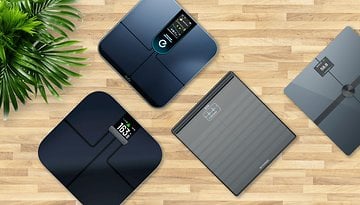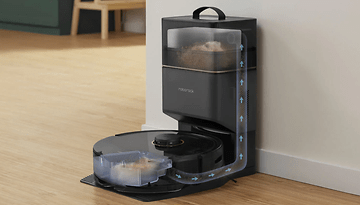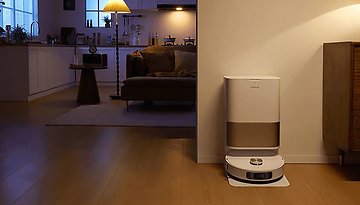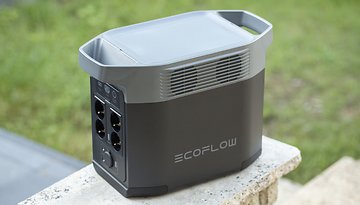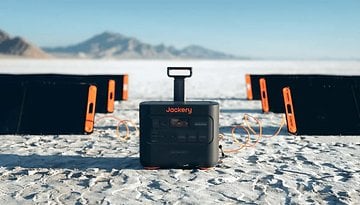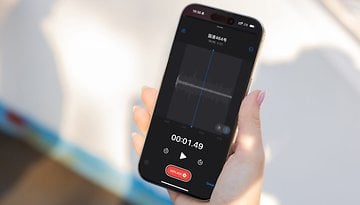The Best EcoFlow Power Stations Compared
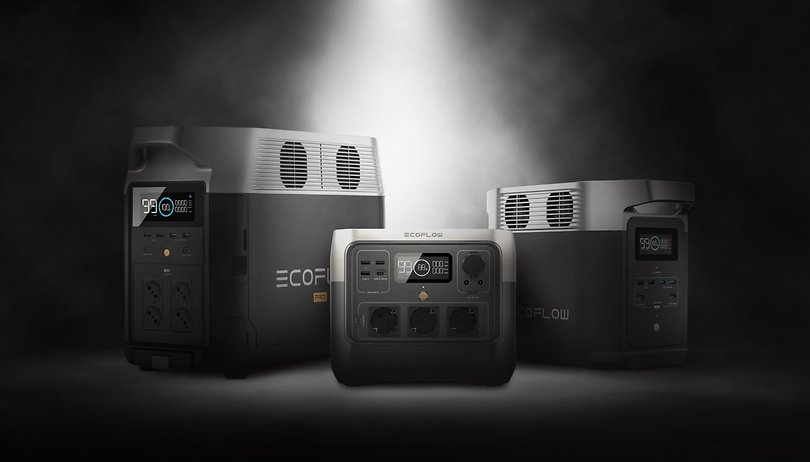

With its Delta and River series power stations (see our "Best Of" list), EcoFlow offers different models for various applications. In this article, we show you the best EcoFlow power stations for camping and as an emergency power supply. We'll also let you know which models can be expanded with additional batteries and which are suitable as power storage units for your balcony solar power plant.
The best power stations from EcoFlow compared
All the power stations we showcased here rely on the latest LiFePO4 battery technology. In addition, all devices have a UPS function (uninterruptible power supply) and a pass-through charging function.
Capacity and output power
The two most important key figures for power stations are the output power and the capacity. These two values determine which devices you can power and for how long.
The output power of the power station is specified in watts (W). On most electrical appliances, you will find a sticker indicating the maximum power consumption, among other details. This information is normally found near where the main connection is located. Some appliances, such as those with an electric motor, require a higher amount of power to start.
Before you make a purchase, think about which devices you want your power station to provide juice and make sure that the output power is adequate. It is best to leave a safety margin anywhere between 20 to 30 percent of the maximum power.
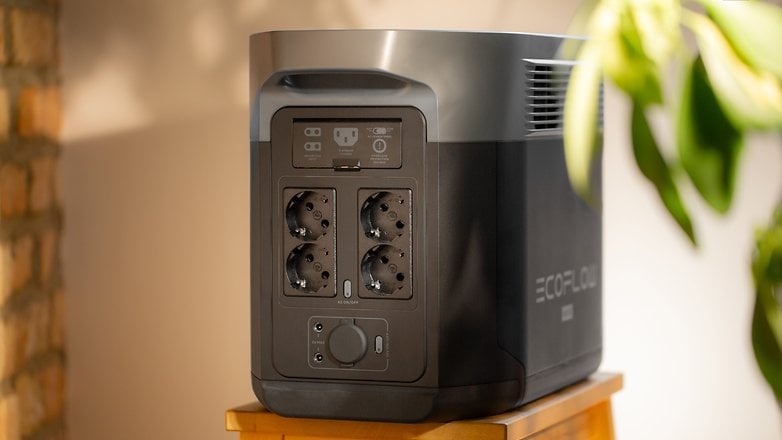
In terms of capacity, power stations are rated by watt hours (Wh). In theory, 1,000 Wh means the power station can supply a 1,000 W appliance with enough power for an hour. In reality, however, power stations never discharge their batteries fully and there is also power loss when converting energy stored in the batteries. Realistically, you should therefore expect anywhere from 80 to 90 percent of the capacity.
- Find out more: How long does a power station last?
Charging options and connections
There are no major differences between the EcoFlow power stations in terms of the types of available connections. All batteries have 120 V sockets, a 12 V cigarette lighter socket, USB-C and USB-A ports. The larger models typically have more connections than smaller ones, but that's about it.
- Buyer beware! How to use your power station safely when camping
You have three options to charge your power station: via the socket, your car, or solar panels. A car adapter is usually included in the packaging. You can buy solar panels as part of a bundle with a power station. Delta series power stations have two connections for solar panels, while the River series power stations come with just one solar input.
However, both model series have one thing in common: You can charge all EcoFlow brand devices via an MC4 connection with a solar panel. When it comes to solar-powered charging, there are considerable differences between the individual solar generators. It is important to remember here: the larger the power station, the higher the amount of solar power that the power station can absorb and subsequently, store.
- Important to know: nextpit clarifies the differences between solar panel plugs
Power stations as balcony solar power plants with PowerStream
Many EcoFlow power stations have a special feature: in conjunction with the EcoFlow Powerstream, you can use them as a balcony solar power plant unit. There is a port on the EcoFlow inverter that you connect directly to the power station. With EcoFlow Powerstream, you can store the surplus electricity generated during the day in an EcoFlow power station and feed it to the household grid at night.
- Also read: Is a balcony solar power plant worth it?
You can use the EcoFlow app to specify exactly how much energy should be fed into your home grid and how much electricity should be stored temporarily. To be on the safe side and ensure that you don't "lose" any power, you can purchase optional batteries for your Delta power stations to increase the capacity.
EcoFlow Shop
Check out what the EcoFlow store has for you!
The best EcoFlow power stations compared
Editor's recommendation: EcoFlow Delta 2 Max
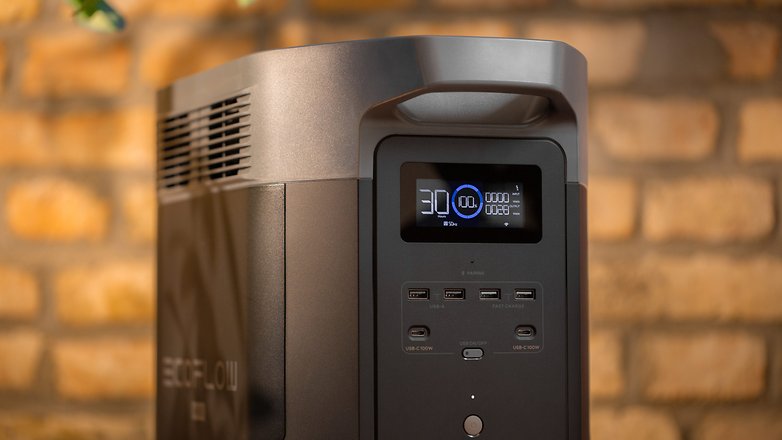
The EcoFlow Delta 2 Max is the best EcoFlow power station that nextpit has reviewed to date. In reality, the 2 kWh power station proved to be a true all-rounder. When required, the Delta 2 Max churns out up to 3,100 W and is also an efficient worker. The mobile power station has a prominent carrying handle at the front and rear on the top, which provides a degree of protection for the connections and screen.
Speaking of connections: If the 2,048 Wh capacity is insufficient for you, you can connect two additional batteries to the Delta 2 Max. To make sure you don't run out of power on the go, you can recharge the Delta 2 Max with two solar panels. If that's not enough reason to choose the Delta 2 Max, the EcoFlow Powerstream also serves as a first-class storage unit for the balcony solar power plant.
Best premium alternative: EcoFlow Delta 2
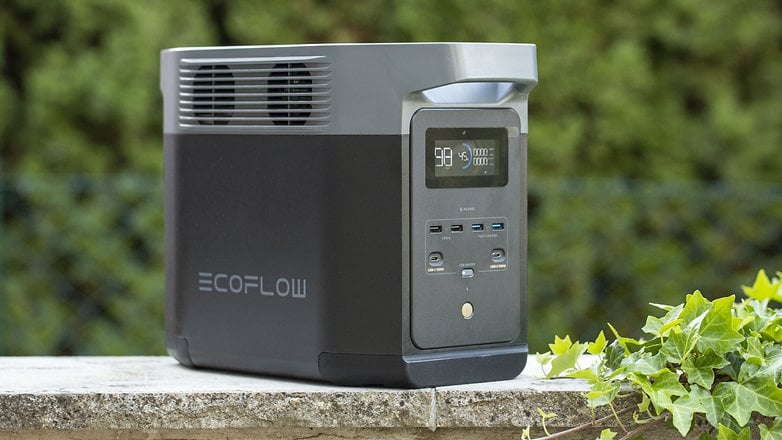
The EcoFlow Delta 2 is the standard model in the Delta series. The portable power station has a 1,024 Wh capacity and delivers a constant 1,800 W. During short power surges, it manages to achieve 2,700 W. The Delta 2 has a lot in common with the Delta 2 Max in terms of looks, but there are slight compromises in terms of performance and capacity.
In the EcoFlow Delta 2 review, the power station delivered exceptionally good performance for its price. Not only can you connect additional batteries if required, the inverter also functions efficiently. The only flaw is the comparatively high volume at full load. With an asking price of $999 (MSRP), this model does not even breach the four-digit range.
Best compact model: EcoFlow River 2 Pro
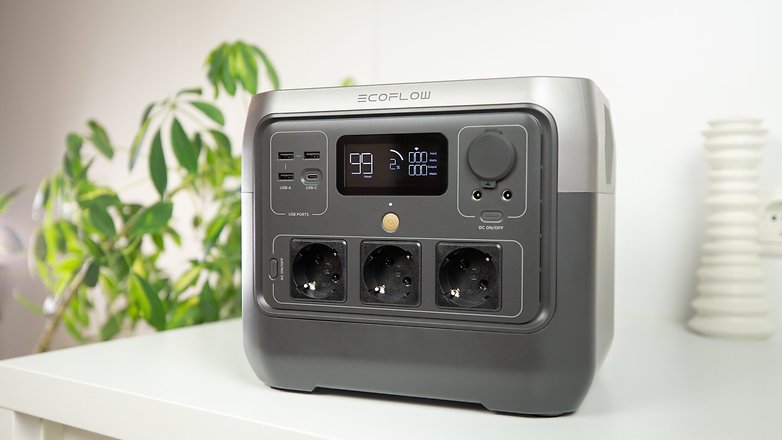
The River 2 Pro is the most powerful EcoFlow power station in the River series. With up to 1,600 W at peak and a 768 Wh capacity, the compact River 2 Pro is the perfect choice for you if you are looking for a smart power station when moving around. The keyword here is smart: In our EcoFlow River 2 Pro review, we had very little to complain about. On the contrary, we were very impressed by the overall package that EcoFlow packed into the 17.2 lbs (7.8 kg) frame.
If you can overlook the lack of a light function, the power station will be a practical companion on your adventure. The carrying handle at the back makes it easier to transport the already highly portable power station. At first glance, the price of $599 (MSRP) might seem prohibitive, but it is actually very affordable. If you are looking for a portable power station with plenty of power, we do not hesitate to recommend you the EcoFlow River 2 Pro.
EcoFlow Delta power stations
| Largest capacity | Best premium alternative | Best choice under $2000 | Best choice under $1000 | |
|---|---|---|---|---|
| Device | ||||
| Picture | 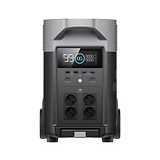 |
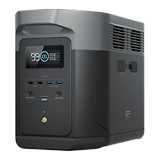 |
 |
 |
| Rating |
|
|
|
|
| Offers |
|
|
|
|
| Price (MSRP) |
|
|
|
|
| Capacity |
|
|
|
|
| Peak power (surge) |
|
|
|
|
| Output power (AC, 120V) |
|
|
|
|
| Size |
|
|
|
|
| Weight |
|
|
|
|
The Delta series includes power stations with the highest capacity and output power among all EcoFlow power stations. In principle, the larger the power station, the higher the capacity and output power. It is no surprise then you can expect a heftier weight, but in return, you gain a wider repertoire of connections.
All Delta power stations listed in the table have connections for additional batteries. Of course, you can bring these models with you on your camping trips, but the River power stations are the more convenient solution for your outdoor adventures if you generally tend to travel light.
Speaking of adventures: every Delta power station has two ports for solar panels. The difference between the individual models lies in the maximum output with which you can charge the power stations via solar energy. Basically, you should opt for the Delta range if you are looking for powerful all-rounders that are also ideal as an intermediate storage solution for your balcony solar power plant thanks to the expansion option.
EcoFlow River power stations
| Largest capacity | Best premium alternative | Best choice under $500 | |
|---|---|---|---|
| Device | |||
| Picture | 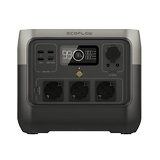 |
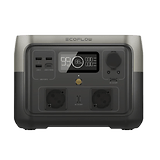 |
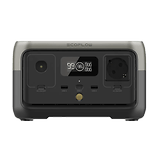 |
| Rating |
|
|
|
| Buy |
|
|
|
| Price (MSRP) |
|
|
|
| Capacity |
|
|
|
| Peak power (surge) |
|
|
|
| Output power (AC, 120V) |
|
|
|
| Size |
|
|
|
| Weight |
|
|
|
The River series consists of the smallest power stations that EcoFlow has to offer. The perfect application for River power stations is, without a doubt, when you are outdoors. Even the "heaviest" River power station, the River 2 Pro, weighs a mere 17.2 lbs (7.8 kg). Each power station in this series has a carrying handle at the back which, unfortunately, cannot be folded. This means the devices take up a little more space than necessary when stowed in the trunk.
These power stations do not offer an expansion option via additional batteries, but you will find an MC4 connection on each model for you to a solar panel of your choice. There are differences in the maximum output with which you can charge your River power stations via solar energy. In the case of the River 2 Pro, you can even connect the bifacial 220 W EcoFlow solar panel (review) and make full use of it.
Do you have any other questions about EcoFlow's power stations? Feel free to share your experiences with these devices in the comments.






